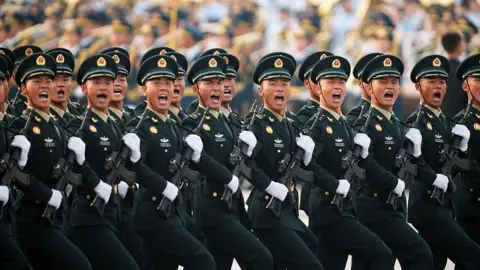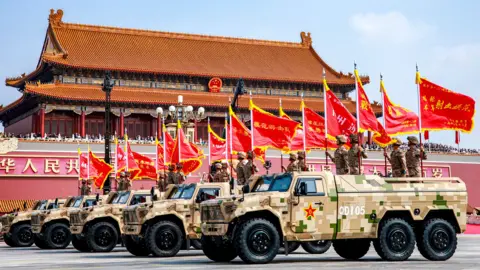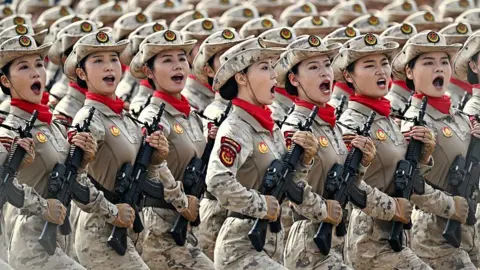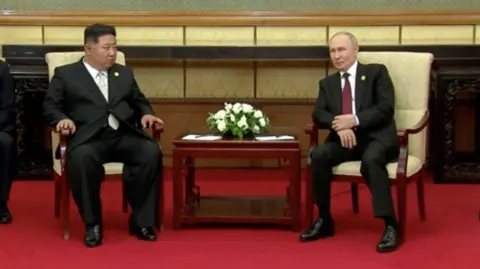In a significant display of military capability, the Chinese Navy has undertaken its first joint exercise with two aircraft carriers, the Liaoning and the Shandong, in the Pacific Ocean, as reported by Japan's defense minister, Gen Nakatani. This operation, held beyond the First Island Chain, represents a strategic expansion of China's naval influence, which historically has been limited to areas closer to its own coastline.
The exercise, observed approximately 750 miles south of Tokyo near Iwo Jima, involved the launching and retrieval of fighter jets, demonstrating a coordinated effort from China’s naval forces. This pivotal moment signals China's ambitions to assert its power not just regionally but also in a broader context that may challenge the interests of the United States and its allies.
To date, China has activated its two current aircraft carriers, with a third, the Fujian, undergoing sea trials and a fourth under construction, displaying a clear commitment to enhancing its naval presence in the Pacific. The presence of these carriers complicates security dynamics, as potential U.S. naval forces would have to navigate through contested waters to reach strategic allies like Japan and Taiwan—an island China regards as its territory.
The U.S., while retaining a qualitative edge with its 11 nuclear-powered aircraft carriers, must contend with China's increasingly sophisticated naval capabilities, which have spurred Japan to also develop new aircraft carriers capable of supporting advanced U.S. fighter jets, further altering the balance of power in the region.
This development in naval strategy reveals the emerging geopolitical contest, as military capacities in the Pacific are reevaluated, prompting responses not only from Japan and the United States but potentially influencing the wider international maritime landscape. Hisako Ueno contributed to this report from Tokyo.





















